The presentation of the Jeddah Street Circuit yesterday was greeted with widespread surprise and not a little criticism.
Much of the latter was directed at the wisdom or otherwise of Formula 1’s decision to race in Saudi Arabia. F1’s relationship with the country has been a focus of criticism since the announcement of a major, long-term sponsorship deal with Aramco 12 months ago.But many also reacted with concern to the planned layout of the waterfront course in Jeddah, Saudi Arabia’s second-largest city. The 6.1-kilometre course is a significant departure from recent F1 street track designs.
Compare it to Baku, for instance. The Azerbaijani course, which has been in use since 2016, is just 100 metres longer. F1 laps it at an average speed of 215kph, but forecasts lap speeds of 250kph at Jeddah:
Considering the two are basically the same length, this rams home just how quick many of Jeddah’s generously-numbered 27 corners will be taken. Even the two U-turns at either end of the course will be tackled in third and fourth gear, F1’s simulations indicate, considerably quicker than a traditional hairpin.
An onboard lap of the Jeddah Street Circuit in Saudi Arabia, which @F1 and @FIA_F2 will race at in November:pic.twitter.com/SmHyJggjWr #F1 #F2
— RaceFans (@racefansdotnet) March 18, 2021
Jeddah is clearly a very different proposition to more conventional, angular street circuits like Baku, Sochi and Singapore. What’s behind this departure?
Of course, any street circuit is constrained by its surroundings. As much as we may love to doodle fantasy street tracks on Google Maps (or is that just me?) it isn’t simply a question of picking six kilometres of local road which will make a fun layout. Many factors from the impact on the locals to the operation of the venue as a circuit need to be taken into consideration.
But the fact remains that F1, who co-operated on the layout with long-time circuit designers Tilke, could have laid out a slower course had they chosen to. The obvious advantage to keeping average speeds down is it presents less of a challenge on safety grounds.
Speaking to media including RaceFans in November prince Khalid Bin Sultan Al Faisal, the president of Saudi Arabia’s motorsport federation, laid out their objectives for the track. “Our goal is to make it an exciting and thrilling race,” he said. “We don’t want it to be one of those boring races where there is no overtaking.”
Yet concerns over how easily drivers may be able to overtake at the circuit was uppermost in the minds of many critics of the layout. When it comes to passing the conventional thinking has long been ‘slow corners good, fast corners bad’.
Advert | Become a RaceFans supporter and
F1’s simulated onboard lap indicates Jeddah will keep drivers’ hands much busier than their left feet. Turns one, 13 and 27 are the most significant braking zones, and they’ll need to slow a little for turns four, 13 and 16, but that’s pretty much it. The rest of the turns will be tackled nearly flat-out, if not actually wide open.
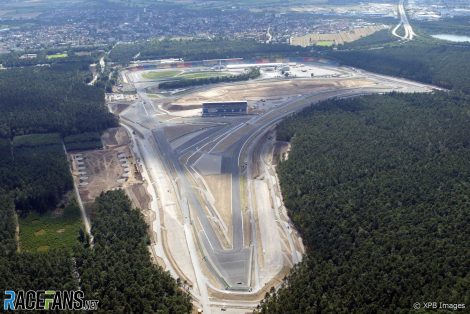
Examples of this are everywhere in their work from the early redesign of the Hockenheimring, to India and South Korea’s long-mothballed grand prix tracks, to venues still on the calendar like Circuit of the Americas in Austin.
Jeddah’s circuit looks a continuation of an emerging trend in circuit design. It may also have been influenced by the opportunity F1 had last year, arising from the pandemic, to race on unfamiliar tracks.
This included the Autodromo do Algarve in Portugal. There, F1 surprisingly opted against using the tight hairpin configuration of turn one, and opted for the quicker version of the corner instead. This was a deliberate choice on F1’s part to experiment with a different style of corner.
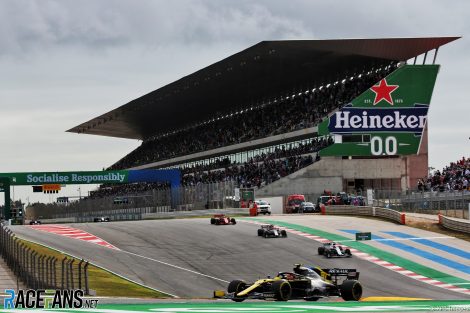
F1 will return to the track, near Portimao, in May. Before last year’s race, the track was resurfaced by Dromo. Company founder Jarno Zaffelli described how designers are thinking beyond the conventional ‘hairpin, straight, hairpin’ approach to encouraging drivers to overtake.
“Portimao is one that we resurfaced successfully and Formula 1 was very happy to go there,” he said. “And they were not overtaking because they had the long straights and hairpin. They were overtaking because simply they were trying to get different lines, they were interpreting the corner in a different way.”
Advert | Become a RaceFans supporter and
A two-dimensional map of the Algarve circuit could hardly look much more different than Jeddah. However track designers are not only thinking about the flat-plan configuration of corners and straights, but also how gradient, camber, sight lines, kerbs, run-off and track surface interact to create a layout which challenges drivers, penalises them for making mistakes and generates natural, rather than artificial, overtaking moves.
Whenever a new circuit design appears for the first time it’s always tempting to over-hype its potential to produce good racing. And whether any track produces a lively race on a given day can be down to any number of factors.
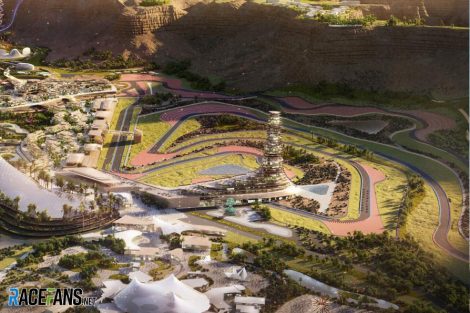
Will a track which bombards drivers with corner after corner, some with restricted sight lines at high speeds, and puts more energy into their tyres than a typical street circuit, provide a greater challenge and a more exciting race? Even if it doesn’t there’s value in the variety a different kind of configuration brings to the championship.
Of course, if it doesn’t work as planned, F1 is likely to get a chance to try again in Saudi Arabia in the near future. Jeddah’s track is expected to be a stopgap solution until F1 heads to a newly-built permanent circuit at Qiddiya, which promises to be even more radical.
2021 F1 season
- Verdict on error in GT race suggests Mercedes would have lost 2021 Abu Dhabi GP appeal
- Title ‘stolen’ from Mercedes made us ‘underdogs people cheer for’ – Wolff
- Red Bull Racing spent £230m during Verstappen’s title-winning 2021 campaign
- ‘I can’t box?’: Hamilton and Verstappen’s 2021 Abu Dhabi GP radio transcript
- Abu Dhabi’s legacy one year on: How the controversial 2021 finale changed F1




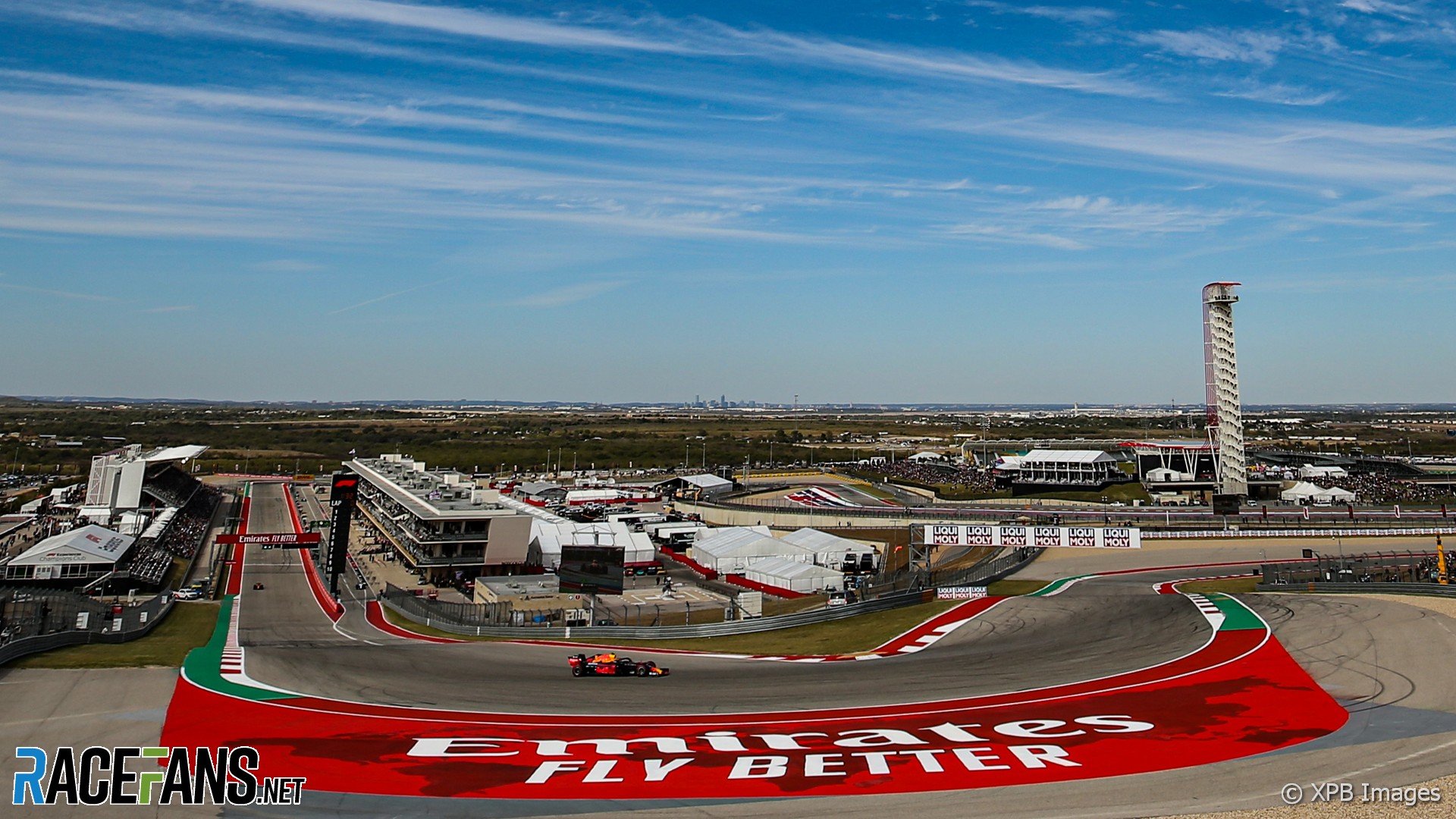
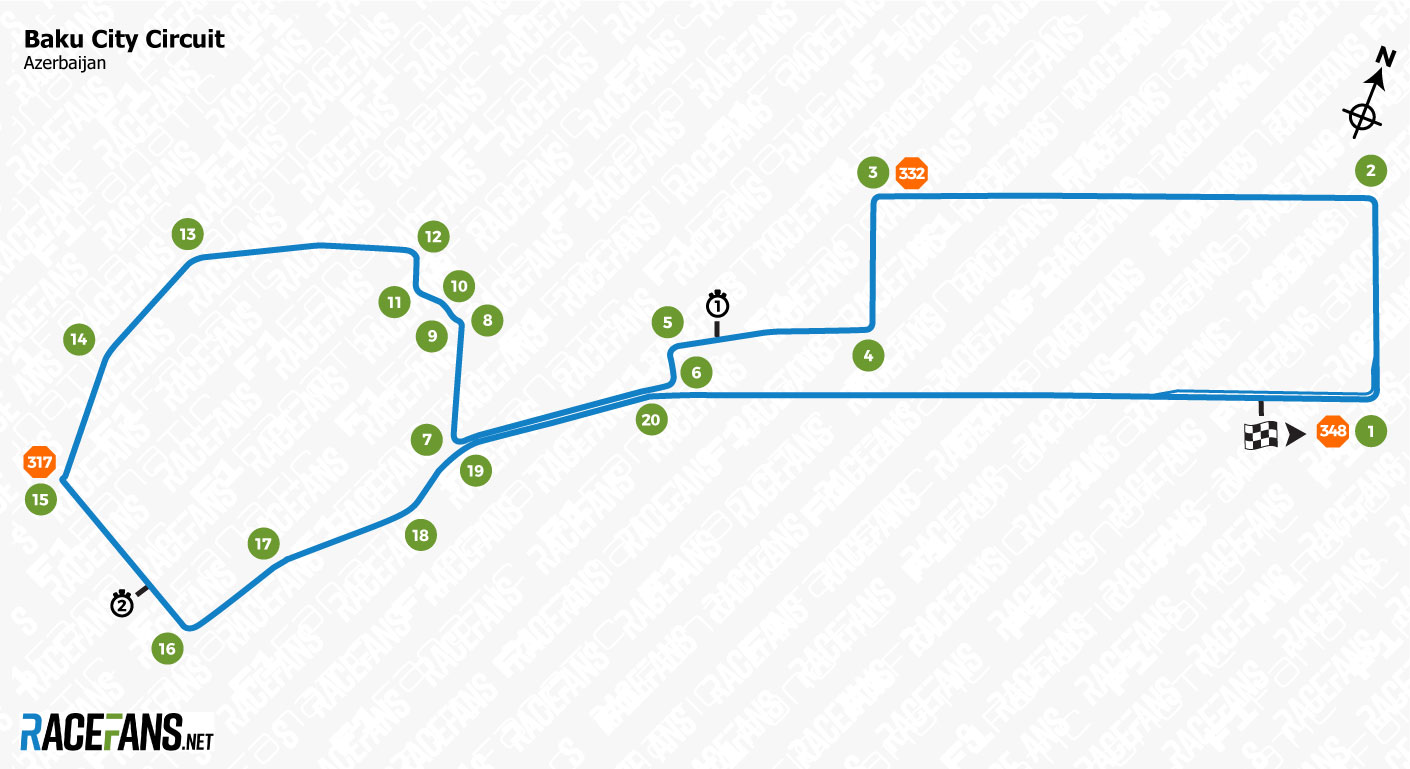
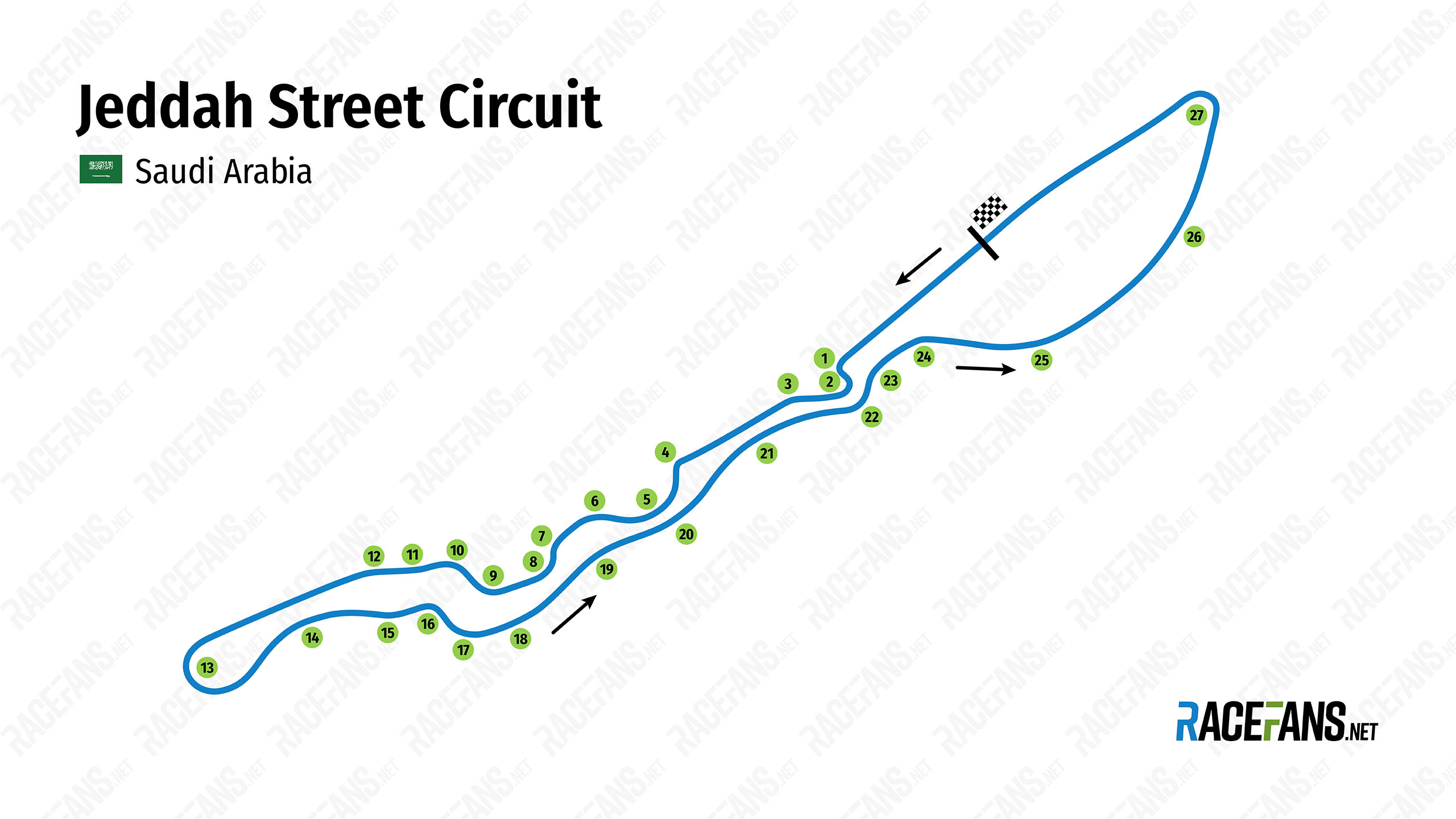
ColdFly (@)
19th March 2021, 13:55
If it delivers on that then it will be a cutthroat race for the drivers.
Jimmi Cynic (@jimmi-cynic)
19th March 2021, 20:48
well… if no one loses their head, will it be considered a success? Or a disappointment?
ColdFly (@)
20th March 2021, 9:10
I suggest to send @sonnycrockett to investigate, but understand he won’t beheading there.
Zafka (@jjlehto)
19th March 2021, 14:04
I don’t know… maybe i don’t get it, but it reminds me of AVUS.
bernasaurus (@bernasaurus)
19th March 2021, 14:05
The thing that grabbed me most when watching the onboard was safety, those ‘kinks’ at 180mph with no visibility seems like a big switch from convention. I’m happy to see it, if the drivers are happy to do it. I guess in a way, it’s not too different from the sequence at Monaco from Tabac to Rascasse with the swimming pool section. And we rarely see incident. If you’re following a car 70m behind, yellow flags are going to do nothing, you’ll across the accident far quicker than any race director or marshal can let you know about it.
It looks like an overtaking nightmare (not perhaps as bad as Zandvoort), and the consensus seems to be we shouldn’t going somewhere they kill journalists in embassies. But if it was somewhere else, i’d be curious to see it, it just looks dangerous (track that is).
Markus (@aesto)
19th March 2021, 21:26
Between this track and Zandvoort, I am seriously worried we might have another death in F2 in the next few years :/
OOliver
20th March 2021, 2:47
I too worry about the race track. If a race track presents an opportunity for a car to be launched well over the barriers and safety netting, then this will be it.
This is Monaco at very high speed
Kribana (@krichelle)
19th March 2021, 14:42
I am not sure of the data, but in hindsight, high speed corners/medium corners followed by straights allow for better following and more overtaking. Or the worst of all, ultra long full throttle sections like in Baku.
Keith Campbell (@keithedin)
19th March 2021, 15:58
@krichelle I agree with this. To me it seems like the first hairpin stalls the momentum of the following car and ensures the leading car will always get on the throttle earlier and be able to open up the gap at the start of the straight. High speed or flat out corners enable the chasing car to build momentum through the corner and carry that into the slipstream to enable natural overtaking, such as the complex leading to Hangar Straight at Silverstone or Kemmel Straight in Spa.
Kribana (@krichelle)
19th March 2021, 16:39
Yea… but Tilke has other ideas, and could be too stubborn to change his track designs. Although, one thing is that, we may need these tracks in which overtaking is difficult, as they add variation to the types of circuits on the calendar. But hey, I am not the one in charge of all of these issues lol. It’s just a shame that we still continue on the same path in terms of new circuit designs. Hanoi’s track could be like Baku due to the 15 second full throttle section after the roundabout corner, but we will never know cause we may not race there, an awful shame really.
Peyton
20th March 2021, 7:45
Usually this is not true. High or mid speed corners are limited by downforce, if you are close behind you are compromised. With a slow corner or a hairpin this is much less of a problem as cars depend on mechanical grip so you can tuck in, brake and then roll out quickly on the following straight.
Roth Man (@rdotquestionmark)
19th March 2021, 15:22
Gives me a headache just looking at it. Anyone old and young enough at the same time to remember the ludicrous bonus track on F1 1997 in the shape of an F1 car? This reminds me of that in wildness. Except they used the shape of a sperm.
James Brickles (@brickles)
19th March 2021, 17:51
@rdotquestionmark – Ahh the Sunob circuit, also known as Frameout City in the original Formula 1 game. A silly little circuit, yes, but incredibly fun to drive on in F1 97.
Roth Man (@rdotquestionmark)
20th March 2021, 19:00
@brickles Sunob that’s it 😂
Euro Brun (@eurobrun)
19th March 2021, 15:39
By biggest irritant with this layout is its sheer length, combined with its lack of run off.
A single yellow flag will ruin qualifying.
Let’s ironically hope that the lap is long enough that no one gets lapped. With only 50laps scheduled, a single (inevitable) safety car would likely steal 10% race distance from us.
Balue (@balue)
19th March 2021, 16:04
@eurobrun That’s already happening with the moronic ‘unlapping’ malarkey.
Victor
19th March 2021, 18:43
Tracks shouldnt have run off areas anyway. If you make a mistake, then get punished for it.
juan fanger (@juan-fanger)
19th March 2021, 23:59
Yes, but there are international conventions against collective punishment.
frood19 (@frood19)
20th March 2021, 11:58
@eurobrun agreed, I’m most disappointed by the length (aside from the host nation). It seems to be a huge error with a number of new circuits. A shorter lap is so much better – more action, closer qualifying, shorter safety car periods – just a better race all round.
Mark Zastrow (@markzastrow)
19th March 2021, 16:03
As a lover of track variety, I’m just glad to see Tilke and F1 being willing to experiment with different types of circuits. There’s nothing else like this circuit on the calendar, and that’s a good thing.
For a long time, I’ve approached new tracks in terms of whether or not the new circuit will make the Codemasters game more interesting or not. This one definitely ticks that box for me.
Klon (@)
19th March 2021, 19:12
@markzastrow I am fully in agreement with you on that one. One of the biggest problems F1 has, at least in my opinion, that so many venues are just exchangeable 5.x km wastelands. Heck, I am willing to accept a couple of boring races a year if it means the world champion has been challenged on all types of track a F1 car can reasonably drive on.
Balue (@balue)
19th March 2021, 16:08
To me this track looks like a death trap with little overtaking opportunity.
Add to that it will favor cars good in high speed corners, and penalize those with strength in other areas, and thereby spreading the field.
davidhunter13 (@davidhunter13)
20th March 2021, 0:38
It actually reminds me of the sort of claustrophobic winding Formula E style layouts. In F1 cars at super high speeds I honestly expect to see a few really dangerous moments at this track which is worrying to say. It just doesn’t really let up and feels very narrow with absolutely no place for anyone to go having an issue or having a collision.
John H (@john-h)
19th March 2021, 22:05
Everything about it is terrible. I’m sorry I have no intelligent words to say about it, it’s either going to be a very processional race on a narrow flat pancake, or a major shunt with likely hospitalisation or worse. Both are not things to look forward to, and that’s even before we get into where the race is being held. Awful.
RP (@slotopen)
19th March 2021, 22:48
@balue
@john-h
I think fast track with minimal runoff combined with the recent “let them race” attitude is a formula for somebody getting
RP (@slotopen)
19th March 2021, 22:48
Into the catch fenc
RP (@slotopen)
19th March 2021, 22:49
Fencing at hight speed.
John H (@john-h)
20th March 2021, 13:30
Indeed @slotopen.
kpcart
20th March 2021, 8:11
are you for real? everything? i have no hope for you in liking any new layout then.
John H (@john-h)
20th March 2021, 13:30
We no. I love many of the new tracks used last season. Kpcart, I’m sorry to disappoint you lol.
Dave
21st March 2021, 9:09
Never forget 1/6…
RatSack
19th March 2021, 22:06
I agree about the lack of overtaking opportunity, watching the on board the only place I could see making a move on that driver is in the straight in the lead up to the back hairpin and that is only if you can follow close in the corner prior. Everywhere else you would end up off the track or losing too much fownforce due to turbulence.
Carlos Furtado das Neves
20th March 2021, 2:09
Hope it will be a track for serious driving.
Enjoy!
kpcart
20th March 2021, 8:10
Looks like a great challenging track from the onboard. like a street version of a simplified Nordschleiffe. parts also remind me a bit of Suzuka. F1 fans though…. no track design will impress them.
John H (@john-h)
20th March 2021, 13:31
LOL!!
Dave
21st March 2021, 9:12
Could’ve been shorter. Just look at Monaco, Valencia Street Circuit, Marina Bay, Adelaide and more infamously Dallas.
armando
20th March 2021, 11:02
not good track
Ipsom
20th March 2021, 12:20
Looks like it’s going to be one of the hardest tracks for the drivers, not much margin for error and those walls are right at the kerbs
As for the fans… I guess we’ll find out. Maybe with next years cars that rely more on ground effects it’ll be a hoot
Mayrton
20th March 2021, 13:00
Boeh boeh boeh. I wish Liberty would stop this nonsense. Racing is done on a track. Not between fences fences fences fences fences everywhere. But hey, Liberty rather makes money than celebrate the sport. Well, on the bright side their behavior does open the door for a new racing class that replaces this one to become a pure racing class. Then the current F1 can continue its path towards becoming a circus. Liberty is probably not even wrong. I can imagine the audience for their circus is much bigger than the current F1 audience (given what on average is being broadcasted I think society wants artificial, pre-cooked content).
Balue (@balue)
21st March 2021, 8:17
I now think Brawn-Liberty chose this type of layout for the driving spectacle and not for racing per se. Remember the new owner’s aim is to attract the young generation, which in their American way assume have no patience for the intricacies of racing, but just into the sight and show. We’ve already seen this philosophy with the pre-race show in Texas, qualifying races, and even the ‘Drive to survive’ soap opera TV show.